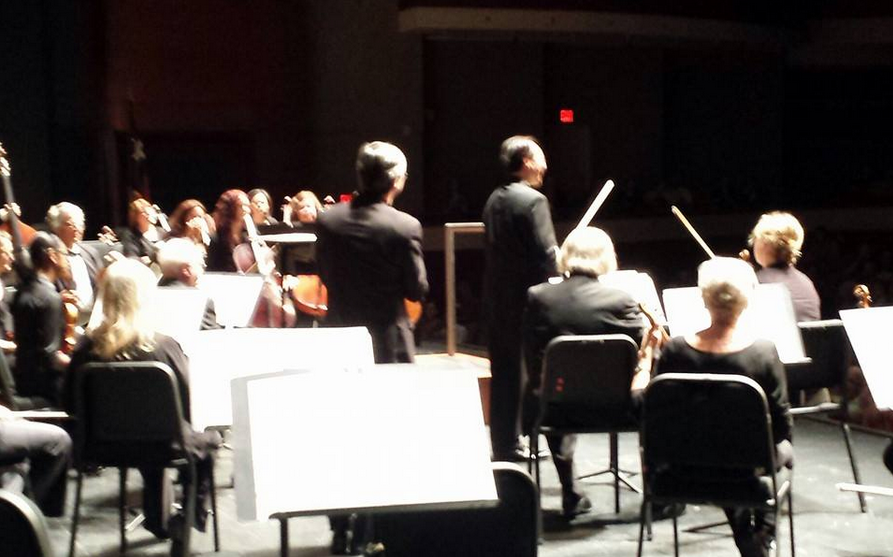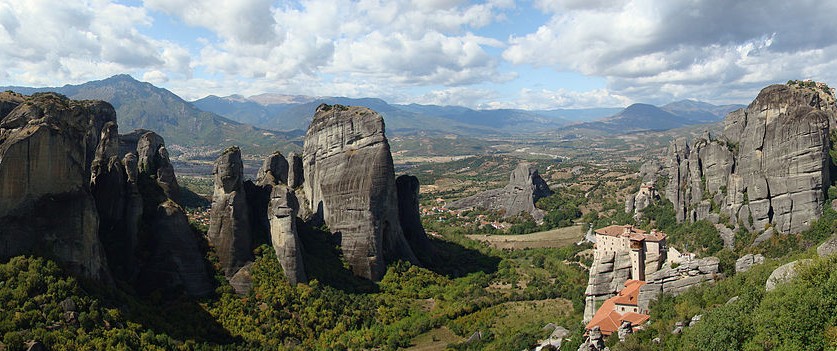Cho-Liang "Jimmy" Lin performs Prokofiev
It's a dark and wet Saturday in October. As I approach the Long Center, I expect to hear the ACL festival, but the Long Center's ever-noisy neighbor Threadgills triumphs. Above the ring-beam terrace, a waning gibbous moon shines through a gap in the clouds.
 Cho-Liang Lin performs Prokofiev Violin Concerto No. 2 with the Austin Symphony. 10/11/13
Cho-Liang Lin performs Prokofiev Violin Concerto No. 2 with the Austin Symphony. 10/11/13
Inside, I see one greasy combover and take a moment to count how many more I can find: only two or three prizewinning sheens. Disappointing. A couple sidles up in the seats next to me. She vigorously fans herself with the playbill as he relates a clip he saw on television of a Ford Ranger outperforming a Dodge in competition. "Isn't that false?" he kibitzes, sending an unforgivable date arm careening over her shoulders towards me. I am eyeing the empty seats to my left, but there's no subtlety in such an evasive maneuver, so I cross my legs to the left and hold my ground.
Maestro Bay emerges and turns to address the audience. Before beginning the program, he says, the orchestra will play a loving elegy for former ASO violist Joan Kalisch, who passed away this Summer at the age of 73. It is the short viola solo (Ysobel) from Elgar's Enigma Variations. Profound silence follows his introduction, and the orchestra offers an elegant rendition with principal violist Bruce Williams raising goosebumps.
 One of the Meteora monasteries atop a pillar of rock.
One of the Meteora monasteries atop a pillar of rock.
Composer Mark Edwards Wilson's Meteora begins. It is a fundamentally visual musical gesture inspired by the impressive monastic complex by the same name, built throughout the 14th Century atop natural sandstone pillars in the Greek highlands. The vivid contrasts between veins of foliage and towering outcrops of rock are reflected in Meteora's colorful orchestration: densely-harmonized oscillations in the lower voices; secco staccato passages; a single vertiginous pause followed by soaring violins. There are smacks of Copland in this piece which utilizes a similar "vernacular" style. All in all a bit theatrical for this reviewer's tastes, but it's nevertheless a particularly affable—not to mention award-winning—contemporary work. The purple-shirted Wilson is summoned to the stage for a much-deserved bow.
Cho-Liang Lin enters in a tie-less suit complete with cummerbund and engages the Prokofiev Concerto's wry opening with a trembling vibrato. He is giving rigorous attention to the maestro, at times leaning considerably towards the podium. Together, they establish an unbending momentum which at certain softer moments (in the second theme, for instance) is borderline clinical. Many of the virtuosic sections are getting devoured by the orchestra, which, even with reduced numbers, is straining to accommodate Lin's notoriously tender sound. The result is a string sound which is lacking in vitality, and the first movement ends somewhat frustratedly. In the lyrical second movement, the ASO winds show great personality; flutes and bassoon are particularly sympathetic with Lin, who responds in conversation. The third movement seems to have some conflict over tempo, with Lin pushing and the orchestra offering some resistance. Here, Lin's great energy is showcased, and the cataclysmic ending nets enough applause for an encore.

"Peter wants me to play something," says Lin. As he begins the Gavotte from Bach's Partita No. 3, the audience responds with "mmms" of approval. It is nice to be able to hear every note and inflection from this Rice University professor and accomplished soloist.
When I return from intermission, I move down a chair so that Romeo can more fully engulf Juliet. For the Tchaikovsky (Symphony No. 5, "Fate")—with which, like many others, I have my own personal history—I decide not to take so many notes and simply give myself over to the music. From the opening rubato and an organic cadence or two, I am convinced that my dear Tchaikovsky is in good hands. I close my eyes and let go.
I will take the time to hypothesize that the ASO does the classics much more justice than they do contemporary pieces. They break bow hairs for these works, get deep into the sound and perform feats of coordination across the whole of the orchestra. They play as if they own the music, without irony or cynicism. They get it. It makes for a spectacular end to the evening.
Side note: the evacuating ACL traffic and a renewed downpour (which among Texas drivers is call for alarm) makes my 6-mile drive home take an hour and a half. At least I'm not the bicyclist with an open umbrella weaving along the sidewalk, though in his defense, he seems to be making better time...